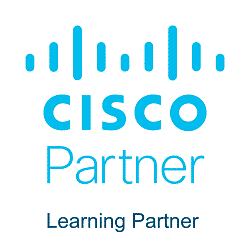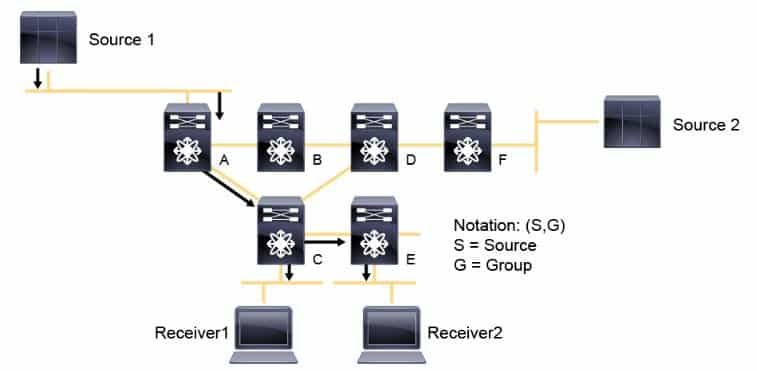DCCUCS – Configuring Cisco Unified Computing System

The DCCUCS Configuring Cisco Unified Computing System Course provides the participant with the skills and knowledge needed to deploy, secure, manage, and maintain Cisco Unified Computing System™ (Cisco UCS®) B-Series blade servers, Cisco UCS C-Series servers, and Cisco UCS S-Series servers for use in data centers. You will learn how to implement management and orchestration software for Cisco UCS. You will gain hands-on experience configuring key Cisco UCS features, Cisco UCS Director, and Cisco UCS Manager; and you will implement UCS management software, including Cisco UCS Manager and Cisco Intersight.
Course Objectives
Below is a summary of the main objectives of the DCCUCS Configuring Cisco Unified Computing System Course :
- Deploy, secure, manage, and maintain Cisco UCS blade servers.
- Implementation of management and orchestration software for Cisco UCS.
- Configuring key features of Cisco UCS, Cisco UCS Director, and Cisco UCS Manager.
- Hands-on experience with key Cisco UCS capabilities.
- Implementation of UCS management software, such as Cisco UCS Manager and Cisco Intersight.
- Optimize resource allocation and performance in Cisco UCS environments.
- Integrate Cisco UCS with cloud platforms and virtualized environments.
- Develop advanced troubleshooting techniques for Cisco UCS infrastructure.
Course Certification
This course helps you prepare to take the:
Cisco Data Center Certifications;
Course Outline
- Implementing Cisco UCS Storage Area Network (SAN)
- SAN Introduction
- Cisco UCS Fabric Interconnect Fibre Channels modes
- Named VSANs
- Cisco UCS Fibre Channel and FCoE Storage Connectivity
- Describing Cisco UCS Policies for Service Profiles
- Storage Policies and Profiles
- Basic Input Output System (BIOS) Policies
- Boot Policy
- Intelligent Platform Management Interface (IPMI) Policies
- Scrub Policies
- Maintenance Policies
- Describing Cisco Adapter FEX and Single Root I/O Virtualization
- Cisco FEX Overview
- Cisco Adapter FEX
- Single Root I/O Virtualization
- Implementing RBAC on Cisco UCS
- RBAC in Cisco UCS
- Users, Roles, and Privileges
- Functions of Organizations and Locales
- Effective Rights of a User
- Implementing External Authentication Providers
- Options for External Authentication Providers
- Implementing Key Management on Cisco UCS Manager
- Public Key Infrastructure
- Implementing Cisco UCS Director
- Cisco UCS Director Overview
- Policies, Virtual Data Centers, and Catalogs
- Cisco UCS Director Virtualization Support
- Managing Compute with Cisco UCS Director
- Cisco UCS Manager Orchestration
- Self-Service Portal
- Reporting and Monitoring in Cisco UCS Director
- Implementing Cisco Intersight
- Cisco UCS Director Overview
- Important Features of Cisco Intersight
- Describing the Scripting Options for Cisco UCS Manager
- Cisco UCS Manager XML API
- Cisco UCS Management Information Tree
- Managed Object Browser
- Cisco UCS PowerTool
- Cisco UCS Python Software Development Kit (SDK)
- Implementing Key Management on Cisco UCS Manager
- Public Key Infrastructure
- Implementing Cisco Intersight
- Cisco Intersight Overview
- Important Features of Cisco Intersight
- Describing the Scripting Options for Cisco UCS Manager
- Cisco UCS Manager XML API
- Cisco UCS Management Information Tree
- Managed Object Browser
- Cisco UCS Manager PowerTool
- Cisco UCS Python SDK
- Implementing Monitoring on Cisco UCS Manager
- Logging Sources in Cisco UCS Manager
- Port Monitoring Capabilities of Cisco UCS Manager
- Simple Network Management Protocol (SNMP) Security Ramifications
- Cisco UCS Manager Call Home Feature
Laboratory Activities
- Configure Pod-Specific Device Aliases
- Configure Zoning
- Configure VSANs in Cisco UCS Manager
- Configure Unified Ports on Cisco UCS Fabric Interconnects
- Install and Boot VMware Elastic Sky X Integrated (ESXi) on Cisco UCS from the FCoE Logical Unit Number (LUN) via FCoE
- Configure RBAC
- Configure Cisco UCS Manager to Authenticate Users via Open Lightweight Directory Access Protocol (OpenLDAP)
- Configure a Trusted Point and Key Ring in Cisco UCS Manager
- Configure Cisco UCS with Cisco Intersight
- Configure Cisco UCS Manager Using Scripting
- Implement Syslog and Call Home
Course Mode
Instructor-Led Remote Live Classroom Training;
Trainers
Trainers are Cisco Official Instructors and certified in other IT technologies, with years of hands-on experience in the industry and in Training.
Lab Topology
For all types of delivery, the Trainee can access real Cisco equipment and systems in our laboratories or directly at the Cisco data centers remotely 24 hours a day. Each participant has access to implement the various configurations thus having a practical and immediate feedback of the theoretical concepts.
Here are some Cisco Labs network topologies available:

Course Details
Course Prerequisites
Attendance at the Cisco CCNA Course is recommended .
Course Duration
Intensive duration 3 days
Course Frequency
Course Duration: 3 days (9.00 to 17.00) - Ask for other types of attendance.
Course Date
- Cisco DCCUCS Course (Intensive Formula) – On request – 9:00 – 17:00
Steps to Enroll
Registration takes place by asking to be contacted from the following link, or by contacting the office at the international number +355 45 301 313 or by sending a request to the email info@hadartraining.com


